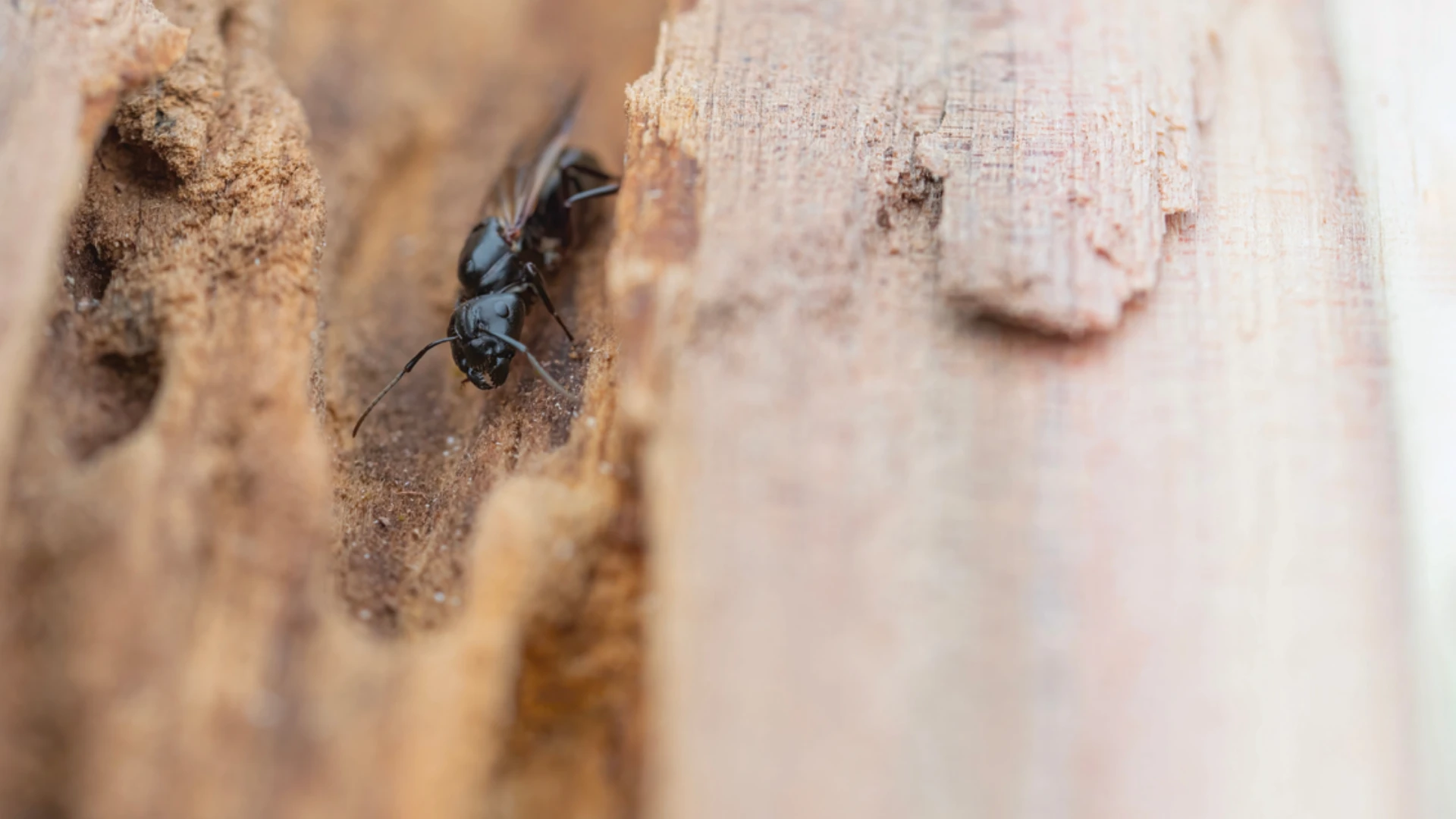Rodent, termite and cockroach populations explode. Argentine and fire ants march northward. And, the numbers of mosquitoes, ticks and vector-borne pathogens swell.
Welcome to a changing climate. Regardless of the finger-pointing tied to global warming, scientists generally agree the Earth’s temperature is on the rise and worldwide precipitation patterns will profoundly change. The future could seem dire. That is, unless, you’re a pest management professional.
RAMPANT RODENTS. Milder winters are one of the reasons rodent control has boomed, said RMC Consulting President Bobby Corrigan. Reduced winter kill combined with urban sprawl and budget cuts in city sanitation and control services have turned a seasonal service into a consistent and lucrative one, he explained.
In fact, 89 percent of respondents to PCT’s 2007 State of the Industry survey offer rodent control services. “Every single month of the year is rodent season,” Corrigan said. “That to me is the biggest anecdotal evidence that there’s probably a climatic effect on these animals.”
ABC Pest & Lawn Services President Bobby Jenkins, Austin, Texas, knows this first-hand. His residential rodent exclusion service has been “an incredible source of new revenue” and contributed significantly to the firm’s 11 percent gain last year. ABC aggressively marketed the service, but rodents already were a hot topic. “It’s really on (the public’s) mind, because it is a change” from rodent populations of the past. Jenkins said he believes heavy rains in central Texas sprouted vegetation that increased food and harborage, helping rodents thrive and prosper. “I feel reasonably certain that had a direct contribution to the increase in populations that we’re seeing.”
INVASIVES MARCHING NORTH. A changing climate may help invasive species gain a stronger foothold. Argentine ants are expected to expand northward in the eastern United States into Maryland and southern Illinois by the 2050s, according to models developed by Dr. Andy Suarez of the University of Illinois.
“We predict they’re going to expand their range into temperate climates that are currently too cold,” as well as potentially contract their range in subtropical regions of the world that become more tropical. The western United States is too dry to support expansion, and in its natural state, so is California, where the ants are big business for pest management professionals. Runoff from crop and lawn irrigation, however, has created favorable environments similar to those found in the pests’ native Argentina, he said.
Suarez and colleagues also identified areas suitable to Argentine ants but where currently there are none, such as in parts of Africa and China, thus highlighting the importance of quarantines and policy management. “We’re moving Argentine ants everywhere, but we don’t see them everywhere because the local conditions aren’t suitable.” That may change if climates do, he said.
Warmer weather will allow fire ants to expand further north as well, said Bob Vander Meer, research leader at the USDA’s Center for Medical, Agricultural and Veterinary Entomology in Gainesville, Fla. Fire ants will not survive at certain temperatures. “If those limits are pushed further north,” said Vander Meer, “the fire ant will fill those niches.” According to a 2005 study, the USDA predicts the habitable area for red imported fire ants will increase 5 percent over the next 40 to 50 years. But as the pace of global warming quickens in the latter half of the century, this area is expected to be 21 percent greater than it is currently. Because black imported fire ants live in higher latitudes than red ones, the area infested with invasive fire ant species could be greater than estimated, the study concluded.
Africanized bees, first found in Texas in the early 1990s, also are on the move. Two years ago, the tropical sub-species was declared “established” in Florida, and changed the industry, said Dr. Phil Koehler, University of Florida. “Stinging insect control is now a growing service, and some companies are doing just that,” he added. “Warmer temperatures are definitely going to affect (Africanized bees) and make them more of a problem for people.”
The pests also are cross-breeding with cold-hardy, resident bees, which may aid their movement northward, said Dr. May Berenbaum, University of Illinois. “It’s never one thing. But temperature can be the tipping point.”
EXPANDING THEIR RANGE. Ticks, too, will likely expand north into Canada and the central United States as suitable habitat increases more than 200 percent by the 2080s, according to a 2005 study by Harvard Medical School’s Dr. John Brownstein, who specializes in infectious disease modeling and surveillance. They’ll also retract from areas in the southern U.S. Experts can’t say climate change is going to increase Lyme disease in the U.S., “but we do know that the tick is expanding into new areas,” he said.
Modern Pest Management CEO Scott Stevenson, Brunswick, Maine, agreed. Ticks and cases of Lyme disease have become more prevalent along the coast of Maine and New Hampshire. “There’s almost a general fear of ticks in our market area,” he said, which has made for good business. Last year, the firm moved from a one-time tick treatment program to a popular quarterly service that treats yard hot spots, perimeters, grass and shrub lines, and pet areas.
Warmer temperatures and drought also change termite populations, said Dr. Gregg Henderson, University of Louisiana. His group has been using light traps to monitor termites in New Orleans for 20 years and has noticed cycles of higher and lower numbers of alates. “What we think we’re seeing in that cycling is a response to the climate and/or weather changes,” Henderson said. He’s found alate populations decrease six months following a drought. “When the rains come back, the populations come back.”
If temperatures rise and precipitation increases in terms of days of rainfall, termite populations will increase in general, he said. Termites in northern climes, like upstate New York, Wisconsin and Canada, will become more active, said Dr. Brian Forschler, University of Georgia, Athens. Being cold-blooded, they’ll respond favorably to warmer weather by eating more and growing faster, which would “allow them to act as if they were in Missouri instead of in Calgary,” he explained.
No longer will they be confined to heated areas beneath homes, added Koehler. Warming ground temperatures will allow them to “spread out and infest areas of land they’ve never infested before.” And they may do this by swarming, something “northern” termites don’t normally do. “The warmer the temperature, the more able they’re going to be able to physiologically respond to that by flying,” Henderson explained. Areas that lose freezing temperatures also may see more infestations of drywood termites, Koehler added.
Cockroaches will gain an edge, too. Although houses generally are warm, the cracks and crevices where cockroaches live get cold, Koehler explained. That’s why cockroaches are more prevalent in summer than winter. If the climate moderates to where summer and winter temperatures are about the same, cockroach populations could actively reproduce year-round, he said. Para-domestic roaches, like Florida’s Palmetto bug, also could survive in higher latitudes and invade more homes. “They can spread further north in a heartbeat,” said Koehler.
CONTROL CHANGE. Climate change will dictate new control methods. “We’ll need to find newer technologies for addressing these problems, knowing the change in climate is going to favor the survival of insects,” said Dr. Roger Gold, Texas A&M.
Since warming and moisture will make habitats more favorable, professionals may have to improve inspection processes and manipulate environments, such as using air flow to keep areas dry, said Dr. Laurel Hansen, Spokane Falls Community College. And mastering the fundamentals will remain key to preventing costly callbacks, Corrigan added. “Make sure you do the job right or you’ll lose money,” especially on rodent control, he said.
The forecast? Climate change will be good for business. “These should be boom times,” said University of Florida’s Koehler.
The author is a frequent contributor to PCT magazine.
Hotter is Better, and So Are Extreme Weather Events
When it comes to pests, hotter is generally better, and extreme weather events provide a decided advantage.
“If environments become warmer and insects are able to adapt to this increase in temperature, then we’ll probably see in those species faster population growth rates,” said Melanie Frazier, who co-authored a study on insects and climate change while a University of Washington biology doctoral student. Warmer temperatures may cause some species to die, she said, but others may adjust their thermal temperature range or move to different altitudes and latitudes to compensate.
“Warm climate pests will be showing up in places where they haven’t been seen before,” said Dr. May Berenbaum, University of Illinois.
Warmer temperatures also will create greater animal and insect diversity, said Dr. Roger Gold, Texas A&M. “Diversity in environment is always a better situation for stability,” he said. “The more species there are in a given part of the world, the more stable that biological system becomes.” But if more species mean more vectors of pathogens, “there’s a biological price to be paid.”
Pests and pathogens take advantage of climatic disturbances, or extreme weather events, explained Dr. Paul Epstein, director of the Center for Health and the Global Environment, Harvard Medical School. The predator-prey balance can be disrupted by many things, including “climate change and the variability that’s getting enhanced.” In the case of rodents, droughts can reduce predators, while heavy rains can increase pest food sources. The mismatch, he said, can lead to the explosion of pests.
Yet, there’s no hard data that shows climate impacts pest populations, said Sherwood Idso, president, Center for the Study of CO2 and Global Change. “So far, we don’t see any real-world evidence that there’s anything unnatural or unusual about the current situation.”
Vector Patrol and Prediction
Tracking climate conditions is helping forecast vector-borne epidemics. Last year, the U.S. Department of Agriculture, Department of Defense and NASA scientists predicted a large outbreak of Rift Valley Fever (RVF) in eastern Africa, alerting world and local heath organizations before the deadly, mosquito-borne disease set in. RVF depends on heavy, flooding rain events, which the team found happens when an El Niño — a change of the ocean-atmosphere system that can impact weather around the globe — forms in the Pacific and simultaneous warming occurs in the Indian Ocean, said Dr. Ken Linthicum, director of the USDA’s Center for Medical, Agricultural and Veterinary Entomology in Gainesville, Fla. The team also found El Niño causes drought in Southeast Asia, which spurs outbreaks of dengue fever. And higher temperatures make viruses like dengue and West Nile replicate faster, so mosquitoes don’t have to live as long to transmit disease.
Knowing when and where vector populations will increase allows for more effective surveillance and control techniques, Linthicum said. For instance, “When we know something’s happening in Africa where (RVF) is endemic, we want to start our heightened surveillance here in this country,” such as near ports and airports. Most times, insects entering the country hit a dead end, “but every once in a while they come in and environmental conditions are just right in the host area that they actually start to propagate.”
Dr. Gregory Glass of the Bloomberg School of Public Health at Johns Hopkins University said climate played a direct role in the 1993 rodent-borne hantavirus outbreak in the Southwestern U.S. Unusual rains and late-season snows boosted annual grasses and insect populations, which served as food sources for deer mice that carry hantavirus, he explained. Glass and colleagues have since developed a climate-based model to predict where hantavirus epidemics may occur. Now, they’re delving into why. Knowing both will help direct funding, policies and control programs to most effectively prevent future outbreaks.
Both said more research is needed to determine how pests respond to changes in temperature and precipitation. “If we know that, then we’re a whole lot better off in terms of anticipating what the effects are going to be,” Glass said.
Linthicum agreed. “The more research that’s done on these areas, the more answers we’ll have and I think the better we’ll be prepared,” he said.
NPMA Launches QualityPro Green
The National Pest Management Association has launched QualityPro Green, a set of standards for green pest control.
The program was developed after a 2007 meeting in Denver, where about 300 industry members discussed the idea of a green certification program. Andrew Architect, executive director, QualityPro, said most of the audience agreed the industry needed a defined standard, and after looking at third-party programs, the association decided to write its own.
“The feeling we got was a lot of people were interested in green services credentialing programs,” Architect said. “NPMA felt that through QualityPro Green we could offer a comprehensive alternative to outside green programs. Companies not only have to follow green service standards, but must also incorporate the main QualityPro element, background checks, drug screening, etc. We wanted something that was coming from inside the industry.”
The program — available only to QualityPro members — combines the general certification standards of the four-year-old program with new requirements for green services. It focuses on exclusion and Integrated Pest Management techniques, as well as a strong emphasis on communication with the consumer, so that both sides understand what is expected and the goals of the pest prevention program.
QualityPro Green-certified companies’ technicians must take annual online certification exams; managers must recertify every two years.
“A lot of it was testing and training and how to educate PCOs and consumers about what a truly green program is and provide it to the consumer,” Architect said. “It’s not a greenwash, but still has moderate elements that fall in the middle of the spectrum.”
Architect said the goal was to have at least 50 companies designated QualityPro Green by the PestWorld convention in October. For more information on the program, or to sign up, visit www.npmaqualitypro.org. — Chuck Bowen
Get curated news on YOUR industry.
Enter your email to receive our newsletters.

Explore the July 2008 Issue
Check out more from this issue and find your next story to read.
Latest from Pest Control Technology
- CAPMA Hosts 2025 Legislative Day in Sacramento
- Grizz Pest Management Bartends for a Cause
- Rose Pest Solutions Becomes Official Pest Provider of Chicago Fire FC
- WSPMA Hosts Legislative Day at Washington State Capitol
- A-1 Pest Control Marks 59 years in Business
- Hawaii PCO Shares Regulatory Challenges, Business Impacts from Lahaina Wildfires
- 5 Tips for Reducing Waste in the Office and in the Field
- OvoControl Now Available in Chile





